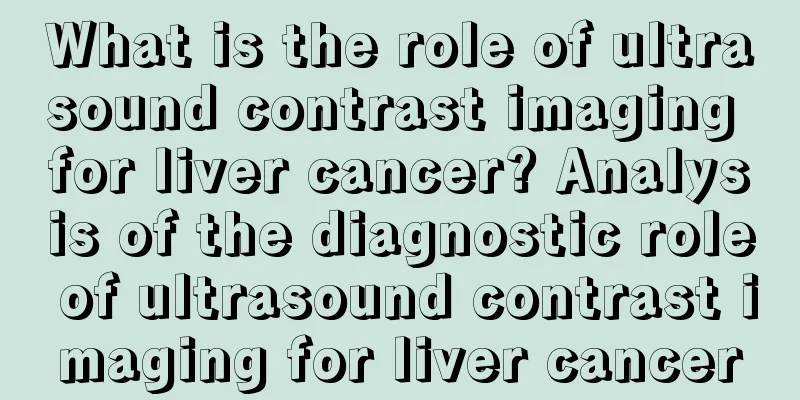What is the role of ultrasound contrast imaging for liver cancer? Analysis of the diagnostic role of ultrasound contrast imaging for liver cancer

|
Ultrasound contrast imaging of liver cancer, also known as acoustic contrast imaging, is a technology that uses contrast agents to enhance backscattered echoes, significantly improving the resolution, sensitivity and specificity of ultrasound diagnosis. Ultrasound contrast imaging technology is often used in the diagnosis and differential diagnosis of liver tumors. The diagnostic process is as follows: after the space-occupying lesions of the liver are found on an ordinary ultrasound machine, ultrasound contrast agent is injected through a peripheral vein to observe the internal enhancement of the liver space-occupying lesion within a few minutes. Since the blood supply characteristics of malignant liver tumors are different from those of benign lesions, the difference in ultrasound enhancement can be used to diagnose and differentially diagnose malignant liver tumors. At present, ultrasound contrast imaging has been widely used in the detection and qualitative diagnosis of solid organ tumors. It is superior to conventional ultrasound and spiral CT in many aspects. Especially in the detection of sub-centimeter lesions below 1 cm, the diagnostic ability of ultrasound contrast imaging can be better than or at least have the same sensitivity as spiral CT. Compared with spiral CT and MRI (magnetic resonance imaging), ultrasound contrast imaging has more advantages, such as good safety, no allergic reaction, real-time, and relatively low examination costs. Ultrasound angiography can dynamically observe the dynamic changes of blood flow in the arterial phase, portal venous phase, and delayed phase of liver lesions, and diagnose and differentiate liver lesions based on the characteristic manifestations of various lesions. For example, hepatocellular carcinoma often presents a fast-in-fast-out performance, with complete enhancement in the early arterial phase and low echoes in the portal venous phase and delayed phase, which can be differentiated from benign lesions in most cases. |
<<: What are the symptoms of early lung cancer? Summary of early symptoms of lung cancer
Recommend
Does Diogenes syndrome occur more often in the elderly?
The elderly are old and weak, and are a group tha...
Cost of radiotherapy for advanced testicular cancer
How much is the cost of radiotherapy for advanced...
What are the TCM methods for ovarian tumors
How much do you know about the threat that ovaria...
How to treat nocturnal bruxism in adults?
When talking about dental problems, people usuall...
How to identify purple sand
In life, many people like to drink tea very much,...
How big a thyroid cyst needs surgery?
Thyroid cysts are very harmful to the body, so pa...
What is purpura and is it easy to cure?
When it comes to purpura, everyone should be fami...
What are the early symptoms of ovarian cancer
The early symptoms of ovarian cancer are usually ...
What is biological therapy for liver cancer?
I am glad to serve you and see a split. According...
What are the methods to remove hanging needle lines
The so-called hanging needle line is a wrinkle th...
Is endometrial cancer hereditary?
The emergence of cancer is still a mystery that h...
Can you eat bitter loach viscera?
Nowadays, people often like to eat some seafood. ...
Benefits of Metronidazole Gargle
The mouths of many people have not been very clea...
How many basal follicles are normal
The follicles will gradually grow and rupture und...
What are the causes of ulcerative enteritis?
Ulcerative enteritis is a disease of the large in...









